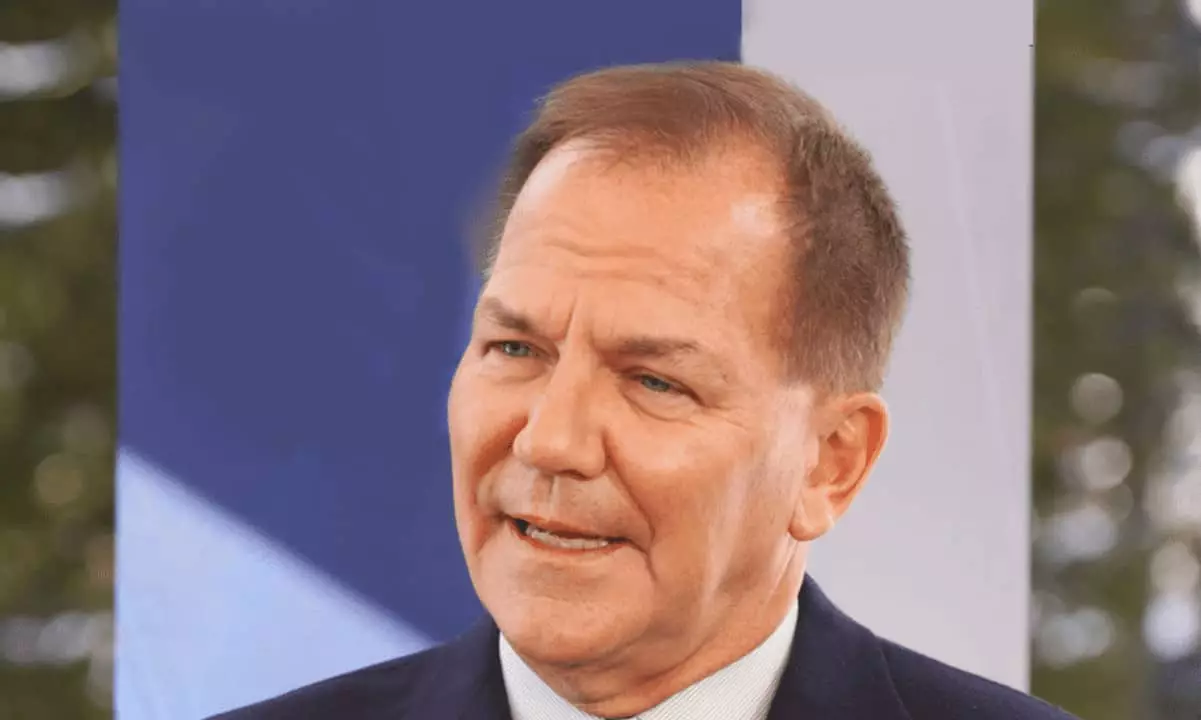In a recent interview with CNBC, billionaire investor Paul Tudor Jones made a striking assertion that “all roads lead to inflation.” This statement has resonated throughout the financial community, especially as economies around the globe grapple with unprecedented levels of debt and rising prices. With a portfolio that includes gold, Bitcoin, and commodities, Jones positions himself strategically in anticipation of an economic landscape heavily influenced by inflationary trends. The context of his forecast speaks volumes about the shifting paradigms of investment in a world increasingly characterized by volatility and uncertainty.
Jones’s investment choices highlight his belief in the merit of diversifying into hard assets. As of October 2023, gold has not only surpassed historical highs, trading above $2,750, but has also surged by 33% this year alone. Bitcoin, too, has demonstrated resilience, coming perilously close to its peak value of nearly $67,000. The appeal of these decentralized assets lies in their potential to serve as hedges against inflation, which Jones argues is inevitable as central banks maintain a dovish monetary stance to manage the existing public debt—currently a staggering 120% of GDP in the U.S.
In contrast to traditional fixed-income investments, which Jones explicitly stated he avoids, the allocation to commodities reflects a discerning strategy that takes into account current economic realities. “I own zero fixed income,” he declared, signaling a significant departure from conventional investment wisdom that often favors bonds amid fears of inflation. This indicates a broader shift where investors seek refuge in tangible assets that may retain their value even when currency depreciates.
Despite Jones’s cautious perspective, mainstream narratives, such as those presented by the International Monetary Fund (IMF), paint a more favorable picture regarding inflation control. In their World Economic Outlook released on October 22, the IMF suggested that the “battle against inflation is largely won.” This disconnect between on-the-ground realities experienced by consumers—who continue to face rising prices for essentials like fuel and food—and the optimistic forecasts from monetary authorities creates a disconnect that can lead to significant market volatility.
The contradiction is further amplified by the sheer scale of the U.S. national debt, now exceeding $35.7 trillion and climbing. A high debt-to-GDP ratio serves as a warning siren to investors as it not only constrains the government’s capacity to respond to economic shocks but also risks a cycle of rising interest rates, inflation, and stunted economic growth. The U.S. economy must find a balance between managing this debt while fostering growth, a task fraught with challenges amid inflationary pressures.
As inflation continues to exert its influence on the global economy, savvy investors are reevaluating their strategies. Jones’s positioning—long on gold, Bitcoin, and commodities—serves as a blueprint for those seeking to navigate these turbulent waters. His perspective suggests that decentralized assets like Bitcoin may see heightened demand as inflation becomes a more prominent concern, offering investors an alternative to traditional fiat currencies that may erode in value over time.
Anthony Pompliano’s light-hearted jest about Jones’s investments reflects a broader sentiment within the investment community—that there is mounting confidence in non-traditional assets amid economic uncertainties. This sentiment is backed by empirical evidence, as evidenced by silver prices currently trading at their highest since 2012, up over 46% this year.
As the interplay of inflation, debt, and market dynamics continues to unfold, investors must remain vigilant and adaptable to changes in the financial landscape. Paul Tudor Jones’s insights provide a crucial lens through which to analyze current economic trends and the implications for future investment strategies. His emphasis on hard assets as a safeguard against economic turmoil cannot be overlooked as individuals seek to preserve wealth in an age where traditional financial frameworks are increasingly called into question. Ultimately, proactive investment approaches in the face of uncertainty may define the next era of wealth accumulation and preservation.

